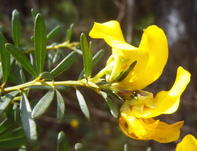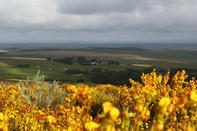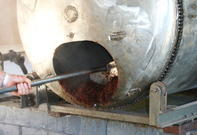SA Herbal Tea
Honeybush tea is a caffeine-free, low-tannin tea made from the fermented leaves and stalks of an indigenous South African shrub. The plant material goes through a fermentation process, during which it changes colour from green to dark brown. After fermentation, the tea is sundried, but a commercial dryer can also be used.
Honeybush is cut and graded into classes of fineness:
‘Dust’ is used for espressos and in the cosmetic industry.
‘Super fine’ is mostly used for tagged tea bags.
‘Regular fine’ is used for tagless tea bags or loose teas.
Coarse grade is sold as loose tea.
Honeybush tea is provided in retail packs, as loose teas in pouches, in bulk bags or in capsules for machine-made espresso.
What is Green Honeybush Tea?
Green honeybush tea is unfermented tea. It is also made from the honeybush plant but is processed by steam rather than fermented, as is the case with ‘normal’ honeybush tea. Honeybush green tea contains much higher levels of antioxidants than other green teas.
Fermentation is also known to reduce the flavonoid content and antioxidant potential of honeybush, so it could be argued that green honeybush tea is ‘healthier’ than the fermented variation.
Species of Honeybush

There are 23 identified honeybush species, all belonging to the genus Cyclopia, indigenous to South Africa and endemic to the Western Cape.
The individual species’ geographical distribution varies, but honeybush species can be found from Piketberg in the Western Cape to Port Elizabeth in the Eastern Cape. Honeybush species are often found in very small areas and specific habitats.
Some species thrive in coastal areas with sea breezes while others like Cyclopia intermedia, also known as ‘berg tee’ or ‘mountain tea’, prefer the snow and fog of high southern slopes of the Western Cape’s mountains.
The majority of honeybush tea in South Africa is from wild-harvested crops, especially Cyclopia intermedia.
Cultivated honeybush tea production focusses on Cyclopia subternata - ‘vleitee’ - while Cyclopia genistoides - also called ‘kustee’ or ‘coastal tea’ - is grown at the southernmost point in Africa, near Agulhas. The honeybush species Cyclopia maculata prefers the Outeniqua area near George and the Cyclopia sessiliflora - 'Heidelberg-tee' - grows in the mountain range near the town of Heidelberg. Cyclopia subternata - also known as ‘marshland tea’ or ‘valley tea’ - prefers low-lying areas.
Growing Honeybush
Honeybush can be grown by seed or cuttings. Seeds need to be treated to ensure germination. The outer seed casing is very hard and needs to be crushed or damaged to allow for germination. This is done with sulfuric acid, sandpaper or even using a smoke extract. Well-drained soil with a pH of 3,5 - 5 is recommended.
By Marinda Louw

